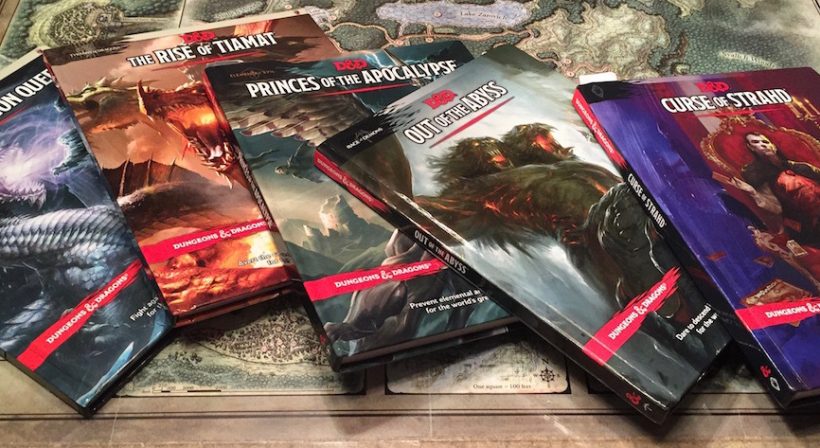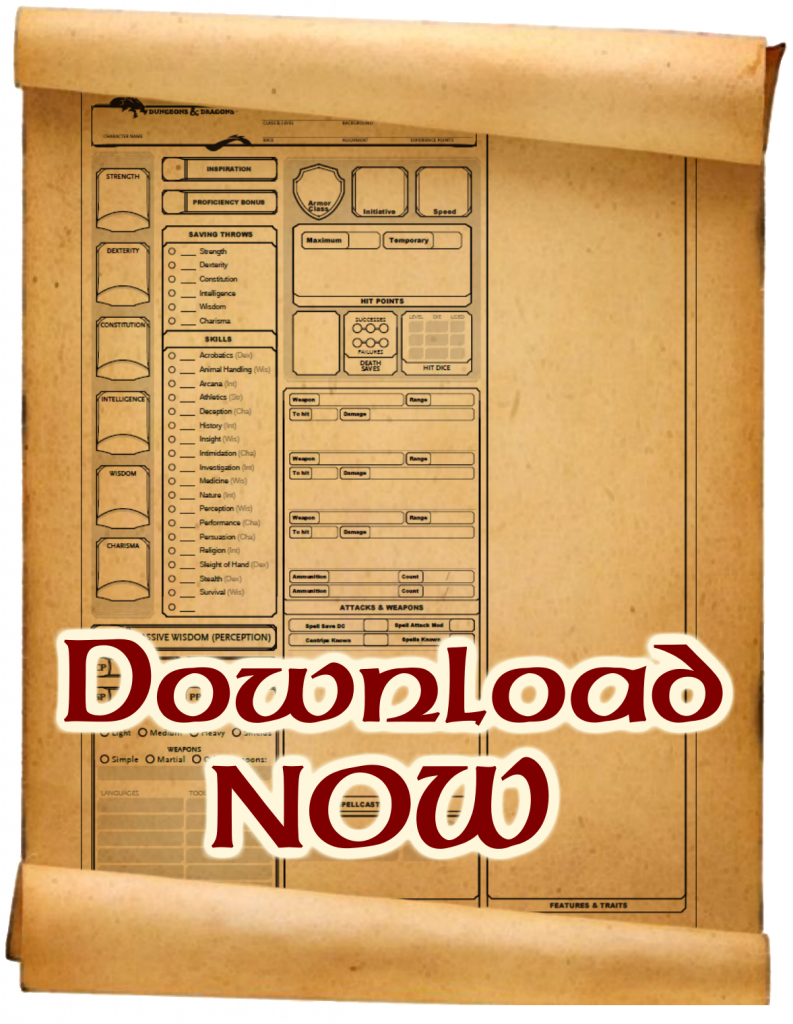Running published adventures is a preferred method of running D&D for many people. It seem easier than creating your own adventures, all the information is right there on the page and you feel like you have a handle on things. The dungeons have been carefully crafted, the encounters carefully balanced and the adventure has most likely been play-tested for you.
But, like me, you may feel like you’re not scratching that creative itch while running one of these adventures. You may feel like you’re cheating or like you’re not a “true DM” if you don’t create your own stuff. I don’t agree with these sentiments, but I do have a way to effectively nullify these thoughts.
This article isn’t about how to run these adventures, but about how to use them.
What’s the difference?
The difference is subtle but a real one. Running an adventure as-is is a valid method of using these books, but definitely not the only one.
The alternative is to take what’s in the book (NPCs, locations, dungeons, maps and story ideas) and change them enough to fit your own campaign, world or general situation.
Do you really like a dungeon? Take it an use it! Do you have trouble creating engaging NPCs? Steal them! Are you feeling stumped at creating a story? Take ideas from the book! Do you want to add an interesting gameplay element but don’t have the experience to design it yourself? I bet you can find something in one of those books, whether it be puzzles or something else like a chase scene or a race.
But the designers put so much work into it…
That is true. Wizards of the Coast has put thousands of dollars at stake to publish these books. So sometimes we feel that if we don’t run the adventure as it is written, we do a disservice to the designers and also to our wallets. You may pay upwards of 50$ for one of these books, and skipping content may seem like you’re not getting your money’s worth.
But I don’t see it that way.
First of all, I think that buying a product gives you power to do whatever you want with it. If you so choose to use one of these books as a drink coaster for your coffee table, then you absolutely have the right to do it. It would be a damn expensive coaster but you can do it.
Secondly, the designers make certain assumptions when creating these adventures. These assumptions might fit your group, but they might not and these people know that. So when they are writing these adventures, they expect you to change things to fit your specific situation.
So go nuts.
Read/Skim the adventure
If you do end up buying one of these published D&D adventures, then your first course of action is to skim it. Look for interesting dungeons and encounters, get a feel for the story-line presented in the book and look for interesting maps and NPCs.
This is important because it is at this point that you will decide how you want to run this (as-is vs “using” it).
As an example, I’m currently running my first actual campaign. I decided to start them off with an adventure I found on the DM’s Guild just to get them to level 3. I then bought Princes of the Apocalypse with the intention of running them through it but quickly decided that the story-line I have set up doesn’t really fit with the one presented in the book. But the book contains some amazing maps by artist Mike Schley and a few interesting encounters and locations. It also contains a whole town (Red Larch) which fits perfectly with my campaign, as my PCs are on the run from Waterdeep and Red Larch is close by. The town is populated with interesting NPCs, and their plot hooks might prove interesting even if I don’t use them exactly as they are.
To make these decisions however, I first had to skim through the book a few times. I didn’t spend too much time on it, I just created a mental map of where everything is.
Decide what is immediately relevant for your game and take notes
If you decide to not run the adventure as-is, then the next step is to identify the parts of it that are immediately relevant for your campaign.
Maybe it’s a dungeon, or a town, a few NPCs or even a plot element. Maybe it is something else and maybe it’s Maybelline. My point is that at this point, you want to figure out what it is you want to use. Don’t freak out if you can’t find anything right now. You didn’t waste your money. Opportunities might present themselves in the future. After all, we never know where our players might take the campaign.
If you do find something you’d like to use in your next session of D&D, then start taking notes. I won’t pretend that I have the perfect note taking method but I will share what works for me.
The first thing I do is read through the part I want to “steal” more carefully. For this example let’s say it’s a dungeon.
I then open up a document on my computer and write down the dungeon’s name, along with a page reference to the book.
Lastly, I go room by room, and copy the descriptions, traps, and encounters into my document, but not word-for-word. That would be crazy. I instead use bullet points to structure the text into a more readable format.
The purpose of this is to not have to use the book on the table. I can instead print out my notes and be able to run the dungeon more fluidly.
An example of my notes is presented below. This is a room from Cragmaw Castle, a location that appears in The Lost Mine of Phandelver.
2. Trapped Hall
- Doors lead to the north, south and east.
- Floor is dusty and cluttered with fallen plaster from the collapse of floors above
- Trap
- Passive Perception 20 or active perception 10 to notice.
- No check to disarm
- DC 10 DEX Save / 3d6 damage or half on save
- 100XP for avoiding trap
- If goblins in area 3 raised alarm
- 3x goblins come from area 4
- 4x hobgoblins come from area 6
This is far more readable to me than how the information is presented in the book. It’s not that the books is badly written but for me it doesn’t really allow for reading on the table.
That’s it!
This is how I like to use the published adventure books. Of course this doesn’t mean that running them as-is is a worse way to do it, but I find that seeing these books as a collection of resources works better for me.

